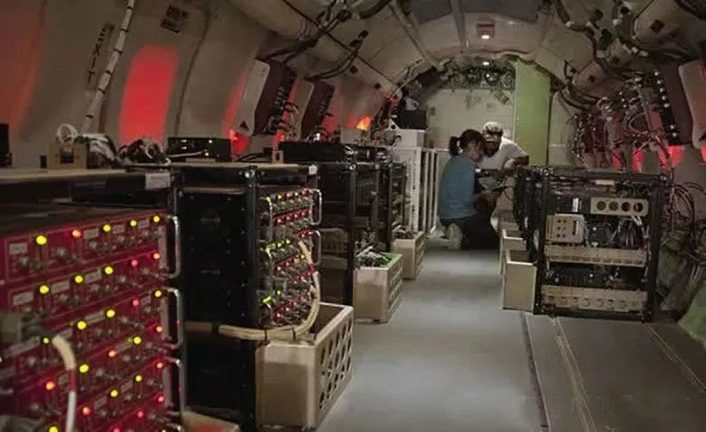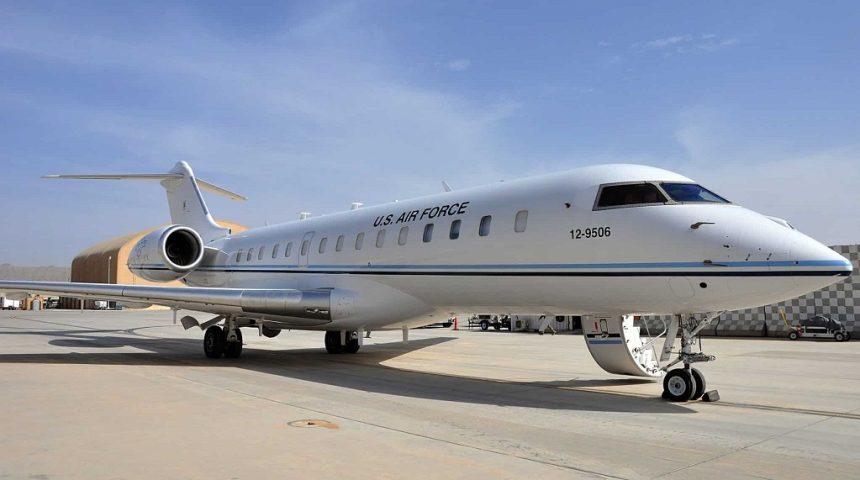With the new aircraft the USAF will triple the E-11A fleet, one year after a fatal crash in Afghanistan left the service with only three airframes.
The U.S. Air Force announced that on January 21, 2021, Northrop Grumman has been awarded a $3.6 billion contract for operations, sustainment, and support of the Battlefield Airborne Communication Node (BACN), including research, development, testing and evaluation, and integration of existing and future payloads. Together with the sustainment contract, the service disclosed that the BACN Program Office, headquartered at Hanscom Air Force Base, is working to procure six more E-11A aircraft over the next five years. Funding for the first aircraft has already been secured and negotiations are in progress, with the contract award expected by end of March and delivery of the aircraft by the end of June.
This announcement arrived just one year after the fatal crash in Afghanistan of one of the E-11As, which reduced the fleet from four aircraft to three. In the investigation report published last month, the Air Force mentioned that a series of factors, together with the catastrophic failure of the left engine, contributed to the crash that led to the death of both pilots.
The E-11A is based on the Bombardier BD-700-1A10 Global Express business jet, which requires no external modifications as the BACN payload is carried internally. The aircraft, first leased at the beginning of the program and later bought by the Air Force in 2011, transitioned in 2019 from contingency funding to a long-term program of record. The Defense Visual Information Distribution Service (DVIDS) website reported in the aircraft’s description that the Air Force already thought about acquiring a new aircraft in the same timeframe.
All the E-11As are assigned to the 430th Expeditionary Electronic Combat Squadron at Kandahar Airfield (Afghanistan), from where they provided near constant coverage in theater together with the EQ-4B. Recently, some of the airframes were spotted by ADSB tracking websites while operating over the Persian Gulf, flying out of Al Dhafra Air Base (UAE). The Air Force, however, did not provide any official info about this deployment.

As you may know already, the BACN is an airborne communications relay and gateway payload carried by the four unmanned EQ-4B Global Hawks and the three manned Bombardier E-11A aircraft currently in service. The BACN payload was developed in response to the communication shortfalls experienced in Afghanistan in the 2000s that were hampering combat operations, ultimately leading to the tragic outcome of Operation Red Wings, famous following the success of the book and subsequent movie “Lone Survivor” by Marcus Luttrell, a former SEAL and the only surviving member of the mission which claimed the lives of 19 U.S. special operations service members.
The BACN technology was fielded in 2009 and the first combat mission was flown over Afghanistan in December 2010. Since then, it has provided military commanders with a long-range, over-the-horizon secure communication capability that connects troops to combat pilots, despite adverse terrain or distance, often when terrestrial services are either restricted or unavailable.
“BACN is a critical tool that commanders know they can rely on,” said Andy Manvell, deputy branch chief of the BACN program. “They know that they might not be able to establish communications without it. It is a very important tool and it has definitely helped save lives. Just imagine if you had someone shooting at you and there was no support. BACN helps to ensure that support arrives.”
The BACN payload, defined as a “Wi-Fi in the sky”, was developed also as the first step towards multi-domain operations, acting as a “gateway” system that allows aircraft with incompatible radio systems and datalinks to transfer information and communicate. The same concept is behind the development of the gatewayONE payload that was tested on the XQ-58 Valkyrie UAV as part of the Advanced Battle Management System (ABMS) and will allow the F-22 and F-35 to communicate in their native “languages”.
Another system, called ReleaseONE, will be carried by the KC-46 Pegasus and will be capable of creating a local cloud network with tactical aircraft in the vicinity of the tanker to share orders. These new systems will possibly replace the EQ-4B (based on the RQ-4Bs Block 20) in the next years, as the drone could be retired soon together with the older RQ-4Bs Block 30.









